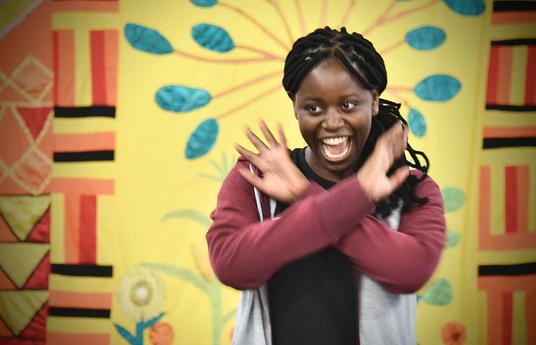Kamishibai
literally means « paper-play » in Japanese 紙芝居. It is a storytelling technique that comes from Japan. Street storytellers would perform in front of children with the support of illustrations displayed through a wooden frame (butai).
Each image reproduces an episode of the story while the corresponding text can be read at the back of the frame.
Multilingual kamishibai
implies telling a story in a fun and captivating way. It is also a powerful tool for teachers to help children learn to read, write, express themselves with words and through the arts… while opening them up to languages at the same time!
At least four languages integrate the story or the illustrations. Multilingual texts reflect the diversity of languages spoken by numerous pupils who come from the local area as well as beyond.
Creating a kamishibai using several languages leads to a reflection on the language of instruction at school, which remains the main language of the story. It is also a great way to allow other languages spoken by children, families or educators within school.
Multilingual kamishibai competition
A multilingual kamishibai is the result of a collaboration between peers. Children cooperate to come up with a story sharing all their language skills. They are then recognized as experts of their languages. As a storytelling form, multilingual kamishibais encourage children to speak up and perform in the language of the school and in other languages that are new to them or known from their own family background.
Multilingual kamishibais may be used at all levels from nursery to schools, within libraries, community or youth centres, by educators, social workers, speech therapists or other professionals.
First introduced by DULALAassociation in 2015, the Multilingual Kamishibai Competition has seen over 33 000 children and professionals create their own kamishibais using a variety of languages.
Today, competitions are hosted in different areas of the world: Switzerland, Portugal, Italy, Greece, Spain, Senegal, Louisiana State in the USA, AEFE French schools in Asia-Pacific area, Canada (Ontario and Quebec states), France and French speaking schools throughout the world.


